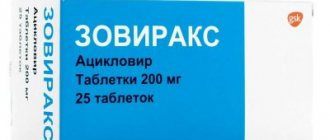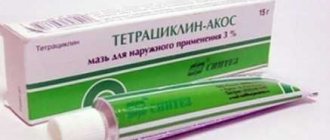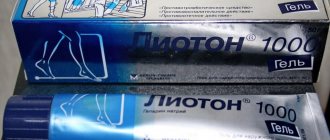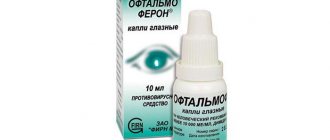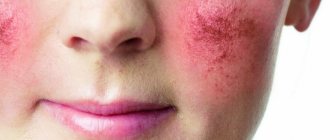Description of yellow mercury ointment
Mercury ointment is a thick consistency product for external use that has an antiseptic effect. Used by applying to the skin or under the lower eyelid.
Apply strictly to the affected area of the skin or mucous membrane in a thin layer , since mercury compounds are poisonous, and it is advisable to use as little ointment as possible at a time.
The drug has not been produced in Russia since 1998. All medications containing mercury have been found to be toxic.
Later in the article we will consider in detail the instructions for using the ointment.
Mercury yellow ointment - composition and release form
The active component is mercury oxide, which has a detrimental effect on pathogenic microorganisms that are the source of the inflammatory process. When applied to the skin, it has a drying effect.
The drug contains the following auxiliary components that have a softening and moisturizing effect, which helps reduce the risk of dry skin:
- lanolin;
- Vaseline oil.
Some manufacturers add a small amount of glycerin and purified water.
The product is a homogeneous, creamy mass. It can be light or bright yellow. It is packaged in aluminum tubes of different volumes, which are then placed in a cardboard box and the manufacturer’s data and expiration dates are indicated on it. You can buy yellow mercury ointment at a pharmacy without a prescription.
The product should be stored in a dark place, for a maximum of 5 years, if the seal of the tube is not broken. After the expiration date, it is strictly prohibited to use the drug for treatment.
Contraindications for eye products
Mercury-based products have many contraindications:
simultaneous use with bromine, iodine, dionine;- individual intolerance, hypersensitivity to mercury;
- allergy;
- kidney and liver diseases;
- diseases of the nervous system;
- pregnancy and lactation;
- age up to 12 years.
Precautions and contraindications
Contraindications to the use of yellow mercury ointment for the treatment of ophthalmic pathologies are:
- children under 12 years of age;
- dermatological diseases accompanied by the formation of purulent ulcers on the surface of the face;
- tuberculosis;
- periods of gestation and breastfeeding;
- pathologies of the gastrointestinal tract;
- individual intolerance to the main active ingredient of the ointment;
- severe pathologies of the kidneys and liver;
- diseases of the nervous system.
Mercury enters the blood and breast milk of a nursing mother. When intoxicated with mercury, the fetus can develop various defects - dysfunction of the brain and nervous system, pathologies of the liver and kidneys.
Pregnancy and lactation
Mercury is very dangerous for the embryo and fetus. It is toxic to nerve tissue and can cause serious disturbances in brain development. Children of mothers exposed to mercury are born mentally retarded and with a variety of congenital diseases.
During lactation, you should also not use mercury preparations: after being absorbed into the blood, mercury will penetrate into the milk, and with it into the child’s body.
Important! Even an insignificant amount of this toxic metal can cause digestive disorders, kidney and liver diseases, seizures, and nervous disorders in a baby.
Instructions for use
The detailed instructions for use attached to the drug allow you to obtain information about the features of using mercury yellow ointment, its dosage in each specific case and duration of use, as well as about possible side effects. To obtain the most pronounced effect, this drug should be prescribed by a doctor if there are indications for its use.
Depending on the age, this drug is prescribed in a certain dosage. Mercury is an active substance, therefore, when using it, it is advisable to monitor the attending physician to prevent possible negative manifestations of hypersensitivity to the components of the product and to make the necessary adjustments in treatment.
The video below will tell you how to properly apply the ointment to the eye:
For adults
For adults, the frequency of application of the drug is 1-2 times a day; the ointment is applied to the skin in a thin layer without further rubbing. When treating the organs of vision, the drug is applied to the lower eyelid.
The duration of treatment is also prescribed by the doctor; it is usually 5-12 days.
Children, newborns
In childhood, the drug is used with increased caution due to the high activity of the active ingredient. It is recommended to use yellow mercury ointment starting from the age of 12 due to the increased sensitivity of children's skin.
Apply the product to the skin in a thin layer, 1 time per day. For the treatment of conjunctivitis, blepharitis and inflammation of the mucous membrane of the eye, the drug is applied to the lower eyelid in a small amount.
During pregnancy, lactation
- The drug does not manifest itself aggressively, however, when treating a woman with yellow mercury ointment while she is carrying a child, one should first calculate the likely benefits of its use in comparison with the possible negative consequences. During treatment with yellow mercury ointment during pregnancy, a doctor should monitor it.
- When breastfeeding a newborn, the likelihood of a negative effect is also taken into account.
Side effects
With long-term use of mercury preparations, side effects occur, the totality of which can be called micromercurialism. This is a disease that occurs with prolonged use of mercury in small quantities.
Here are its main manifestations:
irritability;- trembling hands;
- bleeding gums;
- frequent urge to urinate;
- menstrual irregularities;
- increased sensitivity to odors.
Side effects
Yellow mercury ointment can cause the patient to develop the following undesirable effects:
- From the digestive system - bloating, nausea, flatulence.
- From the urinary system - kidney damage, frequent urge to urinate.
- From the side of the central nervous system - drowsiness, irritability, trembling of the limbs, apathy.
- Other manifestations are menstrual irregularities, skin reactions, increased sensitivity to odors.
When used correctly, such conditions occur extremely rarely. If any atypical manifestations were noted during the use of the drug, then its use must be stopped immediately.
Overdose
Intentionally or accidentally exceeding the recommended dose may result in mercury poisoning (mercurialism). The following symptoms may indicate its development:
- increased fatigue and unexplained weakness;
- nervousness, irritability, aggressiveness;
- insomnia, nightmares, feelings of fear or panic;
- impaired attention or problems remembering information;
- urinating too frequently;
- trembling of the eyelids or limbs;
- hair loss, deterioration of nails;
- hallucinations or signs of kidney and liver damage (indicate a high degree of poisoning).
Need to know! Mercury poisoning occurs gradually. Experts identify three main stages of its progression.
Initially, the patient may feel some weakness along with increased anxiety, and also notice trembling of the fingers. If such a condition manifests itself against the background or after using mercury ointment, then you need to contact a specialist as soon as possible - it is in the early stages that mercury intoxication can be completely cured.
As mercurialism progresses, the patient experiences an increase in tremor, anxiety, and irritability. A person has problems sleeping. Such symptoms, left unattended, in a short time flow into the final, most difficult stage, often ending in death due to disturbances in the functioning of the liver, kidneys or thyroid gland. In this case, even the surviving patient will constantly suffer from certain systemic pathologies.
Overdose
In case of overdose, the disease mercurialism occurs, caused by mercury poisoning. Its symptoms are as follows:
- weakness, fatigue;
- increased irritability, nervousness;
- groundless fears, possible nightmares, insomnia or disturbing sleep;
- anxiety during the day;
- scattered attention, problems with remembering new information;
- hair loss, peeling and weak nails;
- frequent urination;
- trembling of hands, lips, eyelids;
- deterioration of the ability to touch;
- in case of severe poisoning - damage to the liver, kidneys and hallucinations.
Poisoning occurs in three stages:
At first, the person feels slight weakness and trembling of the fingers. If these are uncharacteristic symptoms for you, and you have recently used the ointment, it is advisable to consult a doctor immediately, because Mercury intoxication is easiest to treat at the initial stage.- The second stage lasts several days. The patient feels the effects of mercury on the nervous system. Sleep problems, anxiety, depression and mood swings appear. The tremor intensifies.
- At the third and final stage, other organs are affected: the liver, kidneys, and the thyroid gland enlarges. The poisoned person’s body is depleted, irreversible changes occur in it, which can lead to the death of the patient or ruin his life forever.
Attention! Even patients who successfully survive the third stage of mercurialism are doomed to suffer from chronic diseases of the digestive, endocrine, nervous systems or heart.
Indications for use
Using this drug you can get rid of dermatitis on the eyelid.
Doctors recommend using yellow eye ointment for the following eye conditions:
- inflammatory process in the eye cornea;
- blepharitis;
- barley or chalazion in the stage of purulent discharge;
- dermatitis in the eyelid area;
- allergic, viral and bacterial conjunctivitis;
- scratches, cuts, ulcers on the skin of the eyelids and cornea.
Precautionary measures
Avoid getting mercury ointment into the mouth, nasal cavity, damaged skin or damaged mucous membrane.
Mercury ointment is especially dangerous for children. After using the drug, you must wash your hands thoroughly. When storing, do not leave it open, do not allow the ointment to get on clothes or the floor.
If side effects of the drug occur, you should immediately stop taking it to avoid toxic metal poisoning.
Therapeutic action and effects
In general, the instructions for using mercury ointment are not much different from those for other products of this form of release. At the same time, due to the diseases that it treats and the main active ingredient, there are a number of features.
First, the main difference in use depends on whether the skin or vision is being treated. In the first case, a small amount of ointment squeezed out of the tube is applied to the affected area of the skin, without rubbing. Rubbing is highly not recommended. It is also not recommended to apply the ointment to open wounds. This is done on the doctor’s recommendation, but not more often than twice a day. The course of treatment is always individual and lasts a maximum of 12 days.
As for the use of ointment to treat eye diseases, in this case the amount should also be small. First, squeeze out a thin strip of product onto your finger and place it under the lower eyelid. Often the medication taken is the same as for the treatment of skin diseases. The course also lasts from five to twelve days.
When using the ointment, certain precautions are taken. In particular, do not allow the drug to come into contact with the mucous membranes of the mouth or nose. This is equivalent to swallowing the ointment and can lead to serious poisoning. Strict care is taken to ensure that young children are not allowed to use the ointment. After each use of mercury ointment, wash your hands thoroughly with running water, preventing it from getting on your clothes.
The use of ointment by nursing mothers, pregnant women and children is allowed only under constant medical supervision and in extreme cases.
What can be replaced?
There are no similar mercury-based drugs used to treat ophthalmic diseases. Before going to bed, the application of Cyclomed or Hydrocortisone may be prescribed, but they cannot be used more than once a day. The ophthalmologist also often prescribes Okomistin, Visin, Furacilin or Normax drops for mild forms of the inflammatory process. You can instill the product 5-6 times a day. White mercury ointment is effective in the treatment of purulent formations. Before use, you need to study contraindications.

